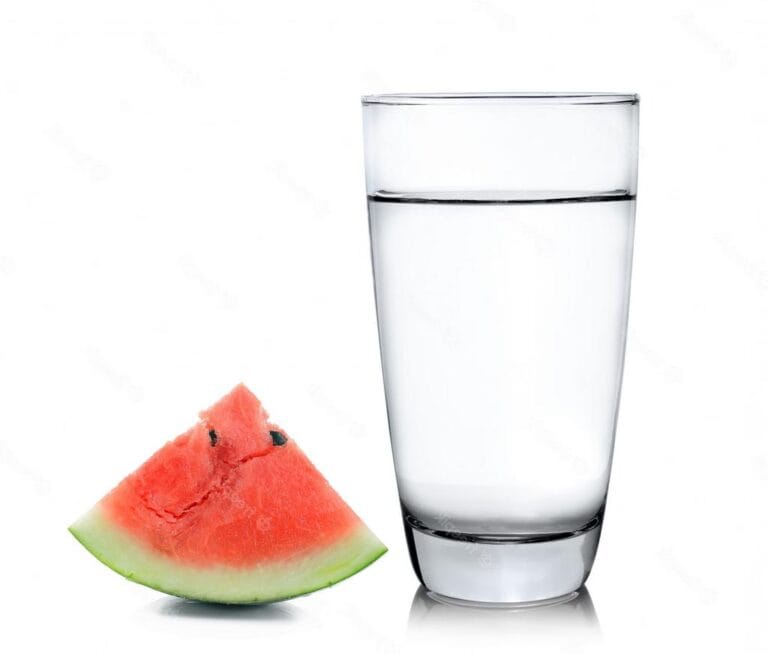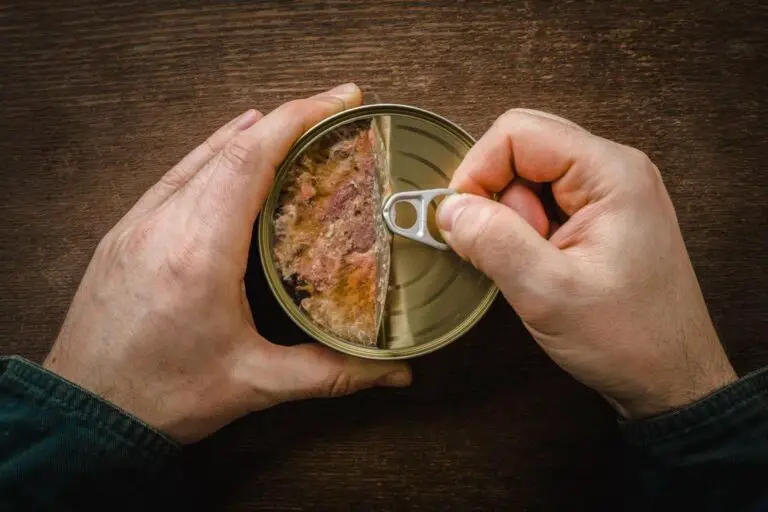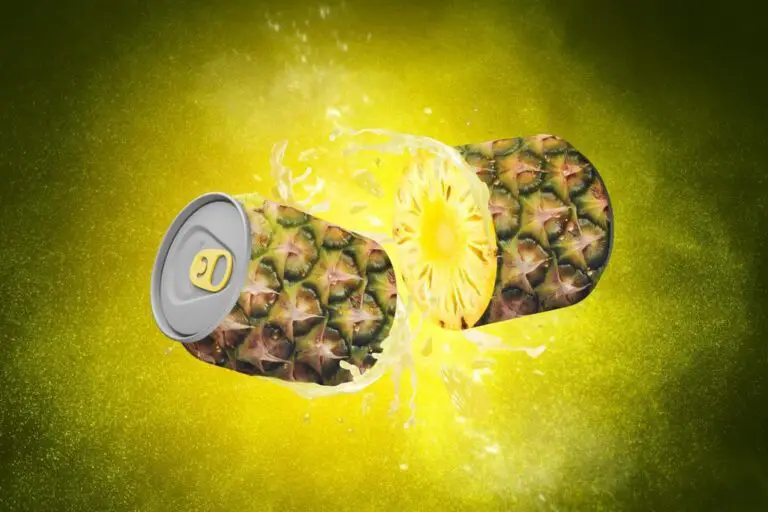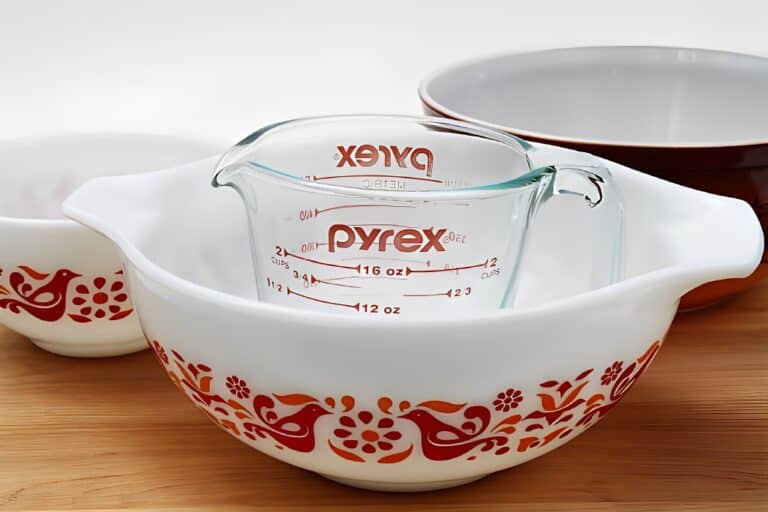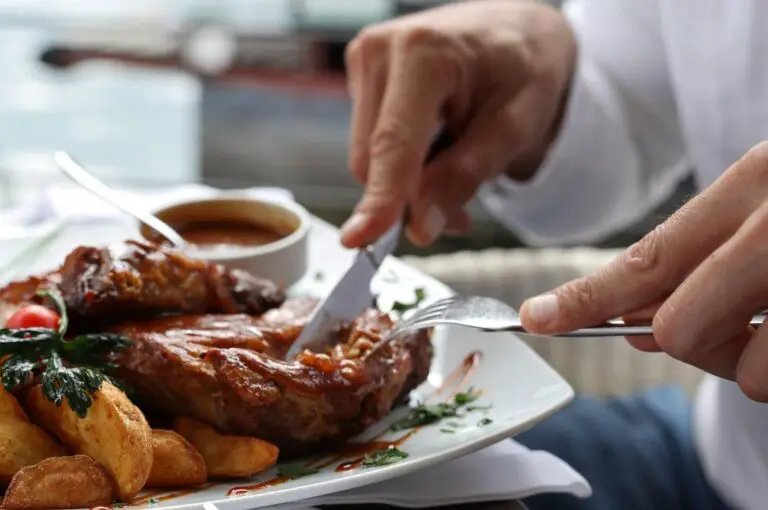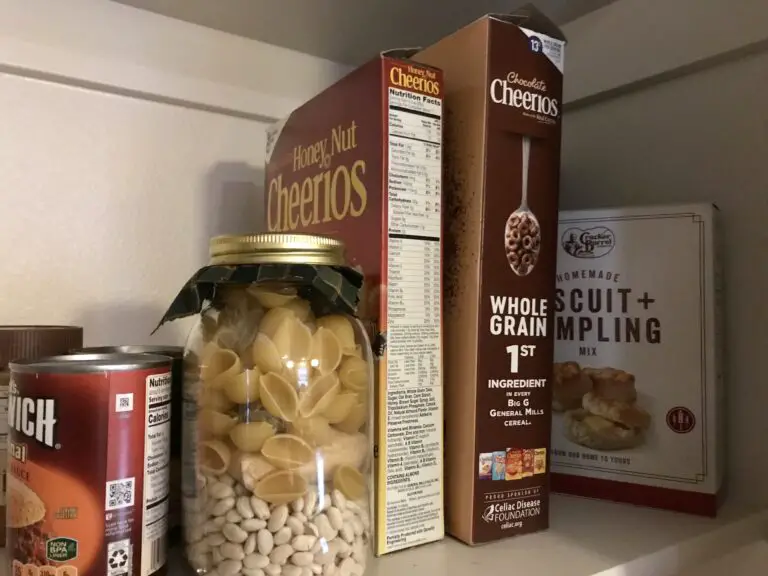Which Zucchini Flowers Can You Eat and How to Cook Them?
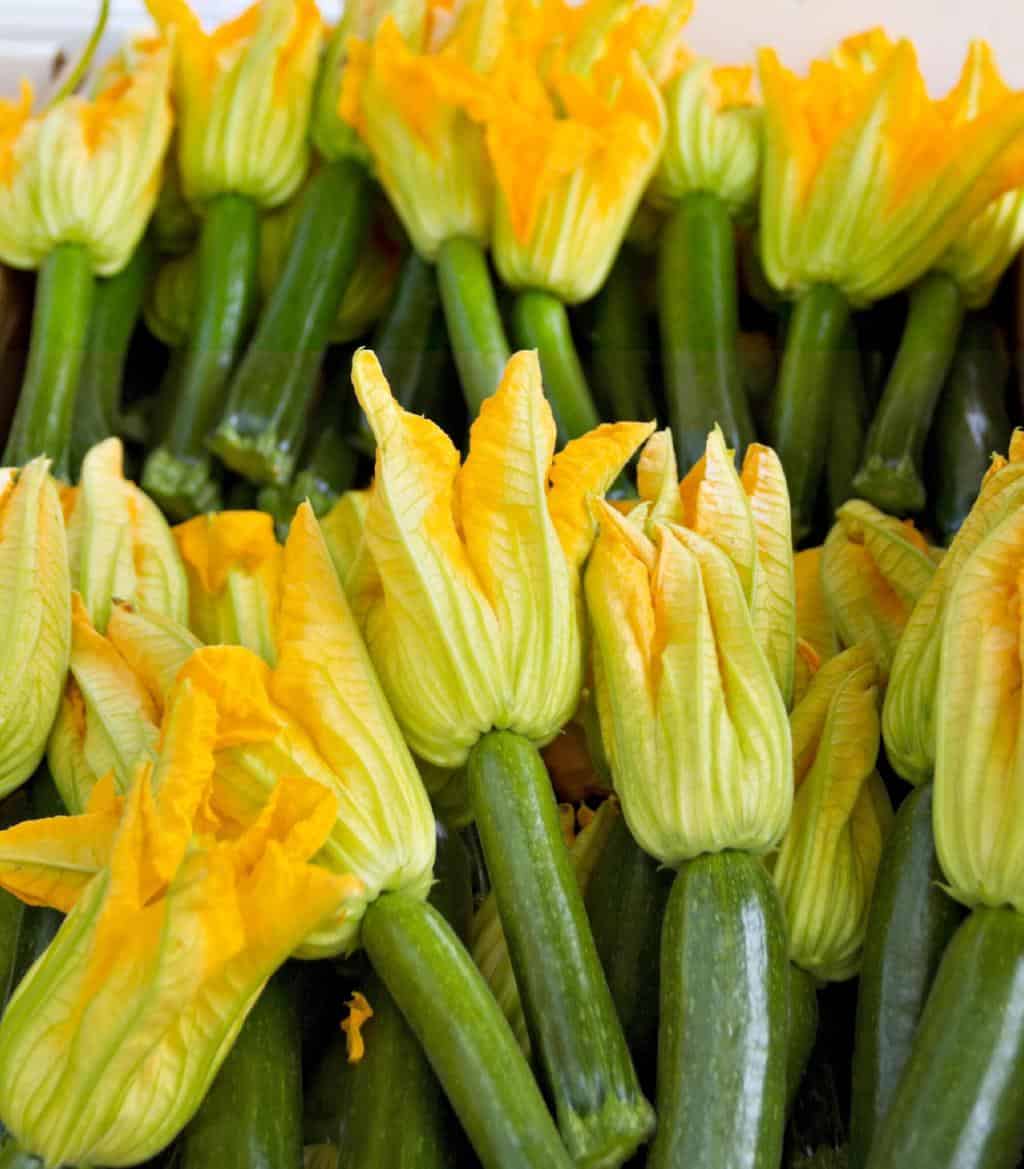
When we think of zucchini, our minds often wander to the vibrant green vegetable. It graces our dinner plates in countless delicious recipes. But did you know that this humble plant also boasts a hidden gem tucked away within its lush foliage?
Enter zucchini flowers. They are delicate blossoms with an exquisite and versatile flavor. They have become coveted ingredients in kitchens around the world.
Zucchini flowers are the edible flower buds of the zucchini plant. People typically harvest them before they fully mature into fruits. These tender blooms possess an ethereal beauty, with petals ranging from buttery yellow to pale orange and even hints of green. It is their delicacy, coupled with a subtle sweetness, that makes them such sought-after additions to culinary creations.
Chefs and home cooks alike cherish zucchini flowers for their unique flavor profile. It can be described as mildly sweet and remarkably fresh. As they add notes of cucumber and squash to dishes, these blossoms elevate conventional recipes to new heights. You can make many things with these petals. For example, you can sauté or stuff them with savory fillings. You can also use them in more elaborate dishes, like Tempura batter or delicate soufflés.
Join us on this journey as we explore the fascinating world of zucchini flowers. We’ll uncover the various types that grace our gardens and investigate how best to harness their delicate essence in your own kitchen repertoire.
Edible vs Inedible of Zucchini Flowers
When it comes to zucchini flowers, not all are created equal. To understand which ones can be cooked and eaten, we must first differentiate between male and female flowers. Male flowers are the ones that appear early in the season, typically before any fruit has formed on the plant. They have long stems and are easily recognizable by their prominent stamen in the center of the blossom.
Female flowers appear a little later. They have a small swelling at the base. If pollinated successfully, these flowers will eventually grow into zucchini. While both male and female flowers can be used in cooking, it is generally recommended to harvest more male blooms than females.
In culinary use, male zucchini blossoms are preferred. They are larger and have a milder flavor than female blossoms. The delicate petals on these vibrant yellow or orange blossoms are perfect for stuffing. You can also add them as an edible garnish to salads or pasta dishes. Female blossoms can also be used, but they might have a slightly stronger taste and contain less flesh for stuffing purposes.
| Also see: Raw Zucchini vs. Cooked Zucchini: Which One is Healthier? |
Common Edible Varieties: Male Blossoms
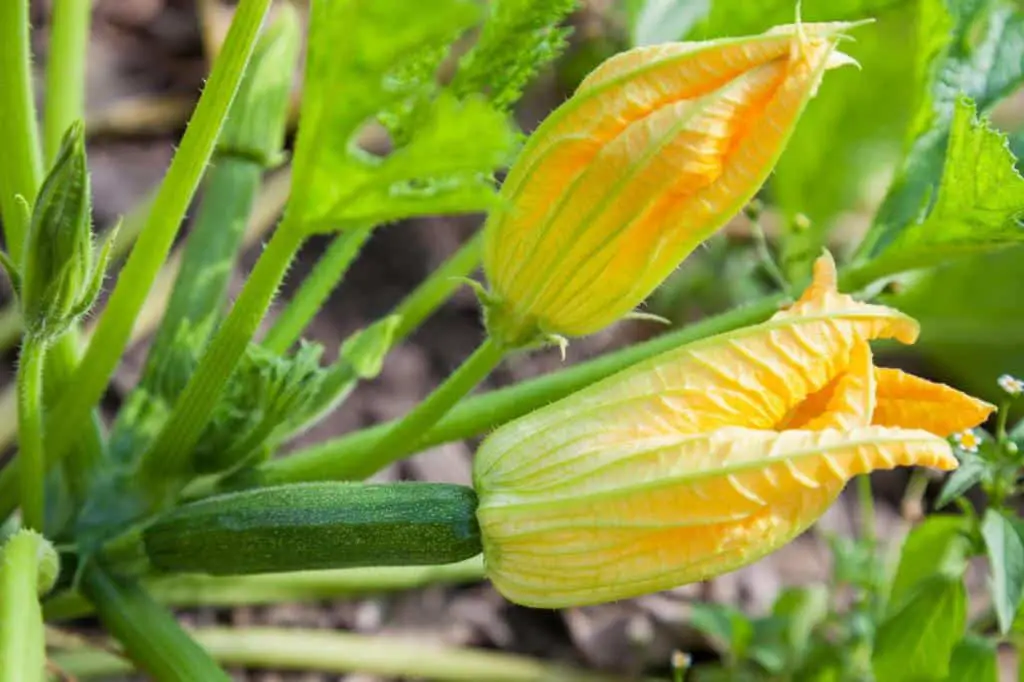
Male zucchini blossoms are frequently used for cooking due to their abundance and versatility. Unlike female blossoms, they do not develop into zucchinis, which makes them readily available for culinary use. These vibrant yellow flowers are prized for their delicate flavor and tender texture. They are a popular choice in many Mediterranean cuisines.
When it comes to incorporating male zucchini blossoms into your dishes, the options are endless. One classic way of enjoying these blooms is by making fritters. Simply dip the blossoms in a light batter made from flour, sparkling water, and a pinch of salt before frying them until golden brown. The result? Crispy on the outside with a soft center bursting with subtle floral notes.
If you’re feeling more adventurous, consider stuffing the male blossoms. You can use various fillings, such as ricotta cheese or herbed cream cheese, mixed with sun-dried tomatoes. Gently twist the tops of each blossom to seal in the filling before baking or sautéing them until tender. This adds an element of elegance to any dish while showcasing the unique flavors of these edible flowers.
Female Blossoms: A Versatile Delicacy
When it comes to zucchini flowers, the female blossoms are often overlooked. Many might assume that they should only use male blossoms in their recipes, but little do they know that female blossoms can be just as delicious. But when is it acceptable to use them? Once these lush beauties have been pollinated and the tiny embryo zucchinis start forming at the base of the flower, you know they’re ready for culinary exploration.
Stuffed female blossoms are a delightful treat that will impress your dinner guests. Carefully remove the pistil from each blossom without damaging its delicate petals. Then stuff them with your favorite fillings, such as ricotta cheese mixed with fresh herbs like basil or dill. Gently twist and press together the opening of the blossom to seal in all that flavor before frying them until golden brown. The result? A crispy on the outside yet creamy on the inside delicacy that bursts with flavors.
If stuffing doesn’t pique your interest, consider using female blossoms as an elegant addition to salads. Their vibrant color and mild flavor provide a captivating contrast. They go well with crisp greens and tangy dressings.
Don’t shy away from incorporating these seemingly unassuming feminine blooms into your culinary adventures. Their versatility will surprise you!
Identifying Edible Zucchini Varieties
As mentioned above, both male and female zucchini flowers are edible. When it comes to identifying edible varieties, there are a few key characteristics to look out for.
Edible zucchini flowers tend to have vibrant colors, ranging from bright yellow to deep orange. They also have a soft texture and delicate petals that make them perfect for cooking. Another important characteristic is the size of the flower itself. Edible zucchini flowers have long stems with large, open blooms.
To identify these varieties in your garden or at a farmers’ market, pay attention to the shape of the flower buds as they begin to form. Male flower buds tend to be rounder and plumper compared to female flower buds. Females will already show signs of swelling at their base, where the immature fruit forms.
At a farmers’ market, you can ask vendors about the specific variety they are selling if you want more certainty. They might even offer you some additional tips on how best to cook or eat different types of zucchini flowers! With this knowledge in hand, you’ll be able to confidently select and enjoy the most delicious edible zucchini blossoms available.
There are various edible zucchini varieties, each with its own unique characteristics. Some popular edible zucchini varieties include
- ‘Black Beauty’: This variety is a classic heirloom with glossy green zucchinis that are harvested at 7-8″ (18-20 cm). It is a compact bush variety suitable for small gardens and containers.
- ‘Raven’: ‘Raven’ zucchinis are a deep green variety. They are loaded with lutein, an antioxidant. Lutein helps protect the eyes from UV damage.
- ‘Cocozelle’: An heirloom variety that produces beautiful, leaf-green fruits with darker green streaks. It has slight ridges that become more pronounced on larger fruit. It is best harvested at 8–10″ (20–25 cm), but 12″ (30 cm) cocozelles are still tender and delicious. It is a compact, bushy vine, making it good for small gardens.
- ‘Trombocino’: ‘Trombocino’ is an Italian heirloom variety. It produces large, curly, trombone-shaped zucchinis. They have nutty, dense flesh and subtly striped skins. The plants can be trellised for smaller gardens.
- ‘Dunja’: An early cultivar bred for high yields and resistance to powdery mildew. The zucchinis are consistently medium-sized, glossy, and dark green.
| Read: Should I Remove Seeds from Zucchini before Cooking? |
Preparing and Cleaning Zucchini Flowers: Removing Pistils and Stamens
One important thing to do before cooking with zucchini flowers is to take out the pistils and stamens. These are the inner parts of the flower that can sometimes add a bitter or unpleasant taste to your dish if left intact. By removing them, you ensure that only the delicate petals are used for cooking, resulting in a more refined flavor.
To clean and prepare zucchini flowers, start by gently opening up each blossom. Look inside, and you’ll see long yellow filaments (the stamens) encircling a tiny bulb-like structure (the pistil). It’s important to remove both of these components before using the flower in your recipes.
For male blooms, which typically lack an attached fruit behind them, simply pinch off their stems at the base where they meet the flower. This will detach any unwanted parts while keeping most of the petals intact.
Female blooms require a bit more care as they have a tiny baby zucchini attached to their base. To clean these flowers properly, delicately twist off or cut away any excess stem near the blossom. Do not damage or remove the baby vegetable.
Safety Considerations
It is very important to always put safety first when cooking with zucchini flowers. One of the main concerns is the presence of pesticides or chemicals on the flowers, especially if they are store-bought. While commercially grown zucchini flowers are generally safe for consumption. It’s always a good idea to opt for organic blooms or ones from your own home garden. Organic blossoms have been grown without the use of harmful chemicals, ensuring that you’re getting a truly natural and chemical-free ingredient.
If you choose store-bought zucchini flowers and are unsure about their origin or whether they’ve been treated with pesticides, there are steps you can take to minimize potential risks. Thoroughly wash the flowers under cold, running water to remove any residue that might be present on their surface. You can also soak them in a mixture of water and vinegar for a few minutes before rinsing to further reduce pesticide levels.
We prioritize our health by using organic or home-grown zucchini blossoms whenever possible. We also support sustainable farming practices that promote environmental well-being.
| Also read: Can You Eat Zucchini Seeds and Skin? |
Zucchini Flower Recipe Suggestions and Cooking Tips
Looking to experiment with zucchini flowers in your kitchen? Here are a couple of easy recipes that will make the most of these delicate blossoms. One classic option is stuffed zucchini flowers, where the blossoms are filled with a savory mixture before being baked or fried. You can try filling them with a combination of ricotta cheese, Parmesan, fresh herbs like basil or thyme, and even a touch of lemon zest for brightness. Once they’re stuffed, lightly coat each blossom with a batter made from flour and sparkling water for an extra crispy finish.
Are you feeling adventurous? How about making zucchini flower tempura to explore different flavors? This Japanese-style dish involves dipping the flowers into a light yet flavorful batter before deep-frying until golden brown. To enhance the taste, mix some with cornstarch for added crispiness, and add spices such as paprika or cayenne pepper for a kick. The result is airy and crispy morsels that highlight the natural sweetness of zucchini flowers.
To maximize both flavor and texture when cooking zucchini flowers, it’s important to handle them delicately. Freshness is key; choose blooms that are still slightly closed, as they tend to have better texture compared to fully open ones. Gently wash them under cold running water just before using them. However, be sure not to submerge them, as excessive moisture can make them wilt faster during cooking.
When stuffing or frying zucchini blossoms, remember not to overfill them; this may cause the filling to burst out during frying or baking. Also, avoid overcrowding your pan when frying. This ensures that each blossom gets evenly cooked without becoming soggy. Steam trapped between crowded flowers would make them soggy.
Conclusion
In conclusion, zucchini flowers are a versatile and delicious addition to any kitchen. We’ve explored the different types of zucchini flowers. The popular male blooms can be cooked and eaten. The more delicate female blossoms can also be cooked and eaten.
You can sauté them in olive oil. You can also stuff them with cheese for a delectable appetizer. Add them to salads for vibrant color and taste. Zucchini flowers offer endless possibilities for culinary creativity. So don’t hesitate to experiment with these beautiful blooms in your own recipes.
We expand our gastronomic horizons by exploring new ways to incorporate zucchini flowers into our meals. This also supports local farmers who cultivate this seasonal delicacy. Next time you see those bright yellow blossoms at your farmer’s market or in your garden, seize the opportunity to indulge in this delightful ingredient. You’ll unlock a world of exciting flavors.

